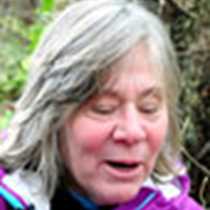The forests draped in misty low clouds that cover the vast fjord lands of coastal British Columbia are wondrous and mesmerizing. As we cruise through narrow waterways and around innumerable islands, it is enjoyable to imagine the great cedar canoes near the edges of the land, paddles dipping into the deep green ovoid reflections. For thousands of years, the people of the Northwest coast have made long seafaring journeys to feast and to trade, to celebrate births and mourn the passing of elders. Watching from the bow of the National Geographic Sea Bird and contemplating the Great Bear Rain Forest passing by us, I am grateful for the descendants of the people of the salmon and the sea, the new generations embracing the traditions of their ancestors and bringing them into a new light.
Early settlers left evidence of their presence here as well. We stopped for a look at the moss-coated ruins of Butedale, once one of the finest canneries on the Northwest Coast. By the mid- 1800’s, Europeans had learned how to safely seal protein-rich salmon in cans, and to ship those products around the world. Much of Britain’s Army during WWI was fed on preserved salmon from this region.
Eagles and gulls, sea lions, seals, and the occasional humpback whale also accompany us on this journey south—all feasting on the richness of this extraordinary place.







